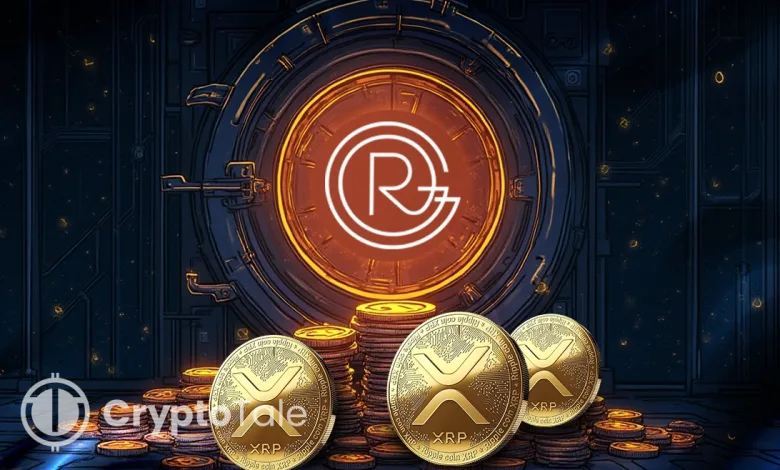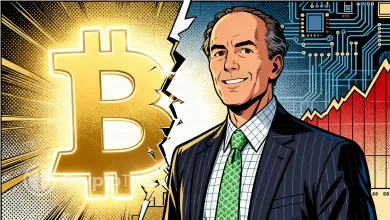Reliance Global Adds XRP to Treasury in $17M Blockchain Bet

- Reliance Global adds XRP worth approximately $17 million to its digital asset treasury this year.
- XRP joins Bitcoin, Ethereum, and Cardano as part of Reliance’s blockchain investment plan.
- The move reflects confidence in the regulated adoption of crypto across corporate finance.
Reliance Global Group (NASDAQ: RELI) has added XRP to its digital asset treasury, becoming one of the first U.S. public companies outside the crypto industry to take this step. The move, disclosed in an SEC filing, confirms XRP’s addition to Reliance’s growing blockchain portfolio that already includes Bitcoin, Ethereum, and Cardano. This development arrives as corporate interest in blockchain-based assets accelerates across institutional finance.
Digital Treasury Strategy and Purchase Details
The acquisition is a part of the Digital Asset Treasury (DAT) strategy of Reliance, which is aimed at developing a balanced blockchain portfolio that would allow maintaining long-term stability. Although the filing did not specify the number of XRP that was bought, attorney Bill Morgan pointed out on X that the acquisition is estimated to have cost approximately 17 million. The acquisition increases the exposure of Reliance to both liquid and useful assets, which highlights a strategic diversification in its financial activities.
Reliance announced that its plan was strictly centered on digital assets with real use cases and solid technology. The firm mentioned XRP’s ability to accommodate over 1,500 transactions per second as a validation of its scalability. Every transaction is said to be settled in less than five seconds and costs less than a cent, which is appropriate for making instant payments worldwide and microtransactions.
The consensus protocol of the XRP Ledger consumes very little energy, which aligns with current ESG (environmental, social, and governance) requirements. Reliance described this factor as a key to a sustainable treasury model. Moreover, the performance indicators of XRP, along with Ripple’s institutional network, make it a helpful tool for enterprises to adopt.
Regulatory Clarity and Institutional Growth
The decision to make the move comes at a time when institutional confidence in XRP was growing due to greater regulatory clarity in key jurisdictions. In 2025, XRP’s market position was enhanced when U.S. courts clarified that secondary sales of the token do not constitute securities transactions. This advancement enhanced the mood among corporations that wanted to hold blockchain assets that are compliant with treasury diversification requirements.
Institutional participation has also been stimulated by the introduction of XRP futures in the CME. The increase in the volume of the derivative product is an indication that professional investors are beginning to consider XRP as a mature market asset. Analysts note that this type of listing enhances transparency, promotes liquidity, and facilitates wider adoption by corporate entities.
It is estimated that corporate treasuries worldwide hold more than $11.5 billion worth of XRP. In the case of Reliance, the decision aligns with its objective of striking a balance between innovation and governance in its DAT strategy.
Related: XRP Price Sheds 4% as Analysts Signal a Possible Rebound Ahead
Market Reaction and Broader Implications
Following the announcement, XRP’s price traded at $2.87, a decline of 2.78%, and down from an intraday high of $2.98. XRP’s market capitalization stands at $171.84 billion, supported by a daily trading volume of $6.67 billion and a circulating supply of 59.87 billion tokens.
The purchase, as stated by Reliance’s CEO and Chairman, Ezra Beyman, aligns with a disciplined digital asset strategy characterized by real-world value, secure custody, and compliance being top priorities, and, therefore, he reiterated the firm’s commitment to having a well-governed blockchain treasury with assets that provide liquidity and institutional-grade trust.
On the contrary, XRP’s position in decentralized finance (DeFi) has been transforming. Aside from its use in payments, XRP has also begun to explore yield farming, staking, and establishing connections with other blockchain networks. The increasing number of areas where the token can be used in this way and the prevention of it being long-term is regarded as a non-investment type of asset.
Nevertheless, Reliance took responsibility and admitted that it could face losses due to market volatility and changes in legislation. Changes in the market price may have an effect on the organization’s financial standing; however, the implementation of the new accounting norms might lead to regulatory problems. The management made it a point to have a rigorous, regular, controlled, and transparent accounting and reporting system, which should be managed by a committee.





